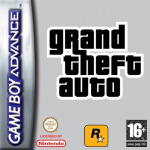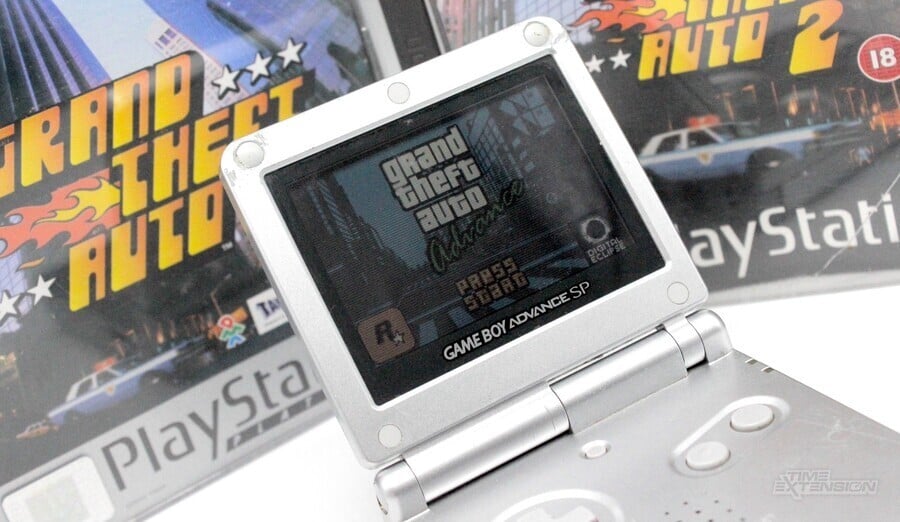
When it comes to discussing Grand Theft Auto games from the early 2000s, there's one title that many fans seem to forget about: Grand Theft Auto Advance for the Game Boy Advance.
This was a top-down throwback to the original Grand Theft Auto games and came out years after the series had already made the leap to 3D. As such, it was considered to be somewhat of an unappealing prospect for players at the time, with the game only garnering average reviews from critics, in addition to mediocre sales figures. Nevertheless, we've always been fascinated by this odd entry into the series for a number of reasons.
For example, it's one of the only Grand Theft Auto games developed by a non-Rockstar studio (the California-based company Digital Eclipse served as its developer); it has an interesting background behind it that included two failed projects before it; and it also served as a prequel of sorts to the phenomenally successful Grand Theft Auto III (making it the only 2D game officially included in the same continuity as GTA's 3D universe).
So, with all that in mind, we embarked on a bit of a quest to find out more about it, reaching out to Digital Eclipse's president Mika Mika, the game's producer and writer James Stanley, the lead artist Dan Schallock, and the Rockstar New York development manager Susan Cummings. They were all able to fill us in on how Digital Eclipse originally landed the exciting project, what it was like bringing the series's adult brand of humour to a Nintendo handheld, and the various hardware challenges that cropped up while developing the ambitious title.
Crawfish Interactive
Before we start, it's probably worth highlighting that Grand Theft Auto Advance wasn't the first ever Grand Theft Auto title for a Nintendo handheld. That distinction instead belongs to Tarantula Studios' Game Boy Color port of Grand Theft Auto from 1999. Tarantula (now called Rockstar Lincoln) was the developer of Game Boy Color versions of the first two Grand Theft Auto games. But when it came time to make a port of the third game, it was undergoing an internal restructuring into a Quality Assurance studio, with the studio planning to wind down its development division.
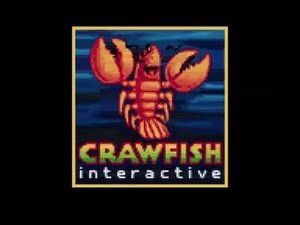
As a result, a New Jersey publisher named Destination Software picked up the rights to Grand Theft Auto III's handheld port from Take-Two in May 2001, with the intention being to publish a side story based on the PlayStation 2 title for the recently-released Game Boy Advance. The details about what happened here are a little bit fuzzy, but what we know for certain is that Destination's project at some point hit a dead end and another developer in the UK, called Crawfish Interactive, began working on a new Game Boy Advance title under the guidance of Rockstar Games, located in New York.
Crawfish's Grand Theft Auto game was to be a prequel set just a few months before the events of the PS2 title, where players would take control of a new character and have to rise through the ranks of the local mafia as they chased down a mafia deserter. Again, though, nothing ever came of it, with the developer Crawfish abruptly closing its door in 2002 and Rockstar nixing an attempt to revive it elsewhere (specifically at the UK developer Climax Studios).
It was at this point that Susan Cummings, an employee at Rockstar, was tasked with rebooting the project somewhere else, and immediately thought of the Emeryville company Digital Eclipse.
Cummings tells Time Extension, "There were a lot of things [at Rockstar] that started and never happened, like a GTA MMO. There was one in the works at one point, it’s just nothing that ever came of it. [GTA on handheld] would have been one of those projects that were lurking around. I don’t remember entirely when I was told we should go find a deal for this, but I had a relationship with Digital Eclipse with Mike Mika and Andrew Ayre and they had a lot of background in handheld, so that’s how we ended up choosing them."
There were a lot of things [at Rockstar] that started and never happened, like a GTA MMO.
Speaking to Mika, he elaborates on the nature of these talks. "They told us that they wanted to create a Game Boy Advance game that was all original and that they wanted to focus on telling a story in the game," he tells us. "We'd known Susan for a while, so she had told us that there were a couple of attempts at doing a Game Boy Advance game, but she didn't tell us how far they had gone or anything like that. I think she was basically giving us a heads up of like, 'You know, we could probably get halfway through this and it could go away.' So, she was more or less saying, 'If you're ready for a production like this, you're welcome to it'. And we're all big fans of the series, so it's like, 'Yeah, we really want to do it.'"
Working With Rockstar
Because of these two previous attempts at bringing Grand Theft Auto to the Game Boy Advance, there's since been a lot of rumours and speculation about whether Digital Eclipse ended up reusing any assets or code from any of these projects or whether it started again entirely from scratch. Both Mika and Schallock deny that any programming, art, or specific story elements were recycled from either the Crawfish or Destination Software attempts. Instead, they claim that the project was a total reset back to square one, with Rockstar meeting with Digital Eclipse in its Broadway offices in New York early on to discuss a potential direction for the handheld game.
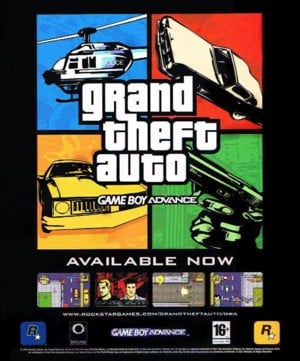
"There was a lot of speculation [about that] for years and we didn't even know," says Mika. "People thought like we were using an engine from somebody or we were doing something else or whatever, but the reality is we were just contacted by Rockstar via Take-Two and a friend that we had worked with for many years."
The artist Dan Schallock clarifies, "We were definitely not taking art from another developer and I’m almost 100% positive on the programming side that there was no code that was reused. Part of that is just Cathryn [Mataga] is like a brilliant programmer, and she doesn’t use anybody’s code. Even if the code is [there], Cathryn is like, ‘What do you want it to do? Oh, okay, I’m just going to redo that. We’re going to redo that and it’s going to do this.’"
According to those we spoke to, the early meetings with Rockstar left a huge impression on the Digital Eclipse team. Not least because of the massive difference in scale between the small, clubhouse-like Californian company and the gaming behemoth that Rockstar New York was growing into at the time.
"We flew out to New York to meet with the Rockstar guys," Schallock recalls, "And that was really impressive because they were this big studio making really big stuff. [Of course], this is entirely anecdotal so I don't know how useful it will be, but I remember that was when [BlackBerrys] had just come out. So, I like knew one or two people that had a [Blackberry]. And like, I remember them telling me that everybody in the company got a [BlackBerry] as a company phone. I was like ‘Wow, this is a huge studio.’"
Mika adds, "I remember going up this big elevator to like these lavish offices, and Sam and everybody, they were all pleasant people. [...] Rich Rosado [the producer on the handheld project] was like our tour guide — him and Susan. And when we were in a room after the meeting, he was just like, 'Here's the deal. This thing is blowing up. We've got all this stuff going on. Crazy politics. It's cutthroat.' And he was like 'My job's to make sure none of that gets to you guys and if I don't talk to you guys for a couple of days, I'm either dead or I'm really trying to get this thing sorted out.'"
[Our producer Rich Rosado] was just like, 'Here's the deal. This thing is blowing up. We've got all this stuff going on. Crazy politics. It's cutthroat.'
At the time, Rockstar and Grand Theft Auto were both taking off into the stratosphere following the enormous success of Grand Theft Auto III and Grand Theft Auto Vice City. And, as a result, the internal culture was often chaotic and challenging inside Rockstar New York, with staff being stretched thin and experiencing a high amount of pressure overseeing the various different projects that were being put into development.
As Mika tells us, though, Rockstar did a great job of shielding Digital Eclipse from all the worst of this chaos, with individuals like producer Rich Rosado and the chief technology officer Gary Foreman always finding time to step in and offer the small team his support.
"Gary Foreman was phenomenal," says Mika. "He was like an old soul there who was always trying to keep the back catalog alive. He had all the source code for everything. He'd work on so many games going back to like the Amiga. Super Off Road and all this stuff, I remember, and he was really great and he was helpful and he was always encouraging us to try things out and stuff too."
"F*ck Walmart"
Similar to what it had done earlier with Crawfish, Rockstar tasked Digital Eclipse with developing a prequel to Grand Theft Auto III. The contents, however, were completely different from that former project, with Grand Theft Auto Advance instead focusing on the new protagonist Mike who is searching for the person who kills his partner-in-crime Vinnie. According to Mika, this idea came directly from Rockstar's senior staff.
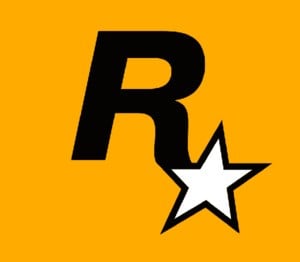
"We pitched a few different story approaches," Mika tells us, "But ultimately, Rockstar was like, 'Nope, this is how the story's gonna be' and it was better than anything we were coming up with. But we ended up contributing to a lot of that. They weren't sharing exactly where they were going with GTA with us, but they gave us some insights and so we just started building the tech out and the way that we were gonna get the story in."
Digital Eclipse's James Stanley, who was also the producer on the project, accepted the responsibility of fleshing out the story from this initial brief. His job was to create new missions and craft the dialogue that appeared throughout. Interestingly, this was his first and only ever writing credit on a game and is still to this day, one of a small handful of occasions post-2000 where Rockstar's Dan Houser isn't credited as a main writer on a Grand Theft Auto project.
At its core, the game is a cross between Grand Theft Auto III and earlier top-down Grand Theft Auto titles. It sees players travelling around Liberty City's three different boroughs completing various missions for criminal organizations to uncover the identity of Vinnie's killer. These missions include, among many others, stealing vehicles, kidnapping a relative of an enemy gang, and planting explosives outside rival businesses. Several characters from Grand Theft Auto III even make an appearance including the Yakuza member Asuka Kasen, demolitions expert 8-Ball, and the Yardies leader King Courtney.
Stanley tells us, "I was an English Lit major in college, so I was decent at writing, but to kind of get the dialect [for some of the characters] it was like, ‘I’m not sure, I don’t know Jamaican.’ So, some of it was going on the internet and seeing what were some common phrases. And I remember sometimes they were like, ‘Yeah James, you have to tone it down, it’s too much.’ There was also Asuka, the Japanese Yakuza. I had actually lived in Japan as an exchange student — I taught English over there — so it was all fresh in my mind. I think I based that character a little bit off an ex-girlfriend over there (laughs). But we also had a couple of [meetings] where we met with Sam and some of the other guys at Rockstar."
Looking back now, it is a fairly admirable attempt at a GTA-style story that feels a little anti-climactic, yet should still be applauded for not abandoning the series's adult themes in search of satisfying the platform holder Nintendo or the various rating boards.
If you've played it, you'll know that there are still plenty of outrageous missions, as well as irreverent jokes, and adult themes. Apparently, during the production, some inside Digital Eclipse were worried about this lack of self-censorship and that it might get the game into trouble with certain retailers. Rockstar, however, encouraged the studio to push against these boundaries regardless and to not compromise its vision for purely commercial reasons.

"I remember we were bringing up the idea of like, 'Well, are you guys worried about sales if there's an M rating and we don't get into stores like Walmart or whatever?'" Mika recalls. "I don't remember who we were talking to but they basically said 'Fuck Walmart'. I was like 'Okay, I guess you guys don't care about any of that.' It ended up going really well for us because I think they were just like 'Push it, make it feel like GTA, and we're not gonna compromise what the game is for Nintendo'."
I don't remember who we were talking to but they basically said 'Fuck Walmart'. I was like 'Okay, I guess you guys don't care about any of that.'
According to Cummings, this lack of commercial interest was a common theme for a lot of Rockstar's output at the time, with the publisher reluctant to sanitize its vision for a wider audience. Cummings even remembers one instance where Houser memorably threatened to cancel the release of a GTA game in Japan after the Japanese rating board CERO requested an easter egg featuring decapitation be removed from the game.
"Rockstar was very much the games Sam [Houser] wanted to make," explains Cummings. "So, it was very inwardly driven by what he wanted to do. And it’s always been one of their bottlenecks: how many things can you creatively lead at one time? Whereas 2K, which I later founded, was set up the opposite way. We had funding and we didn’t have a clear mandate of what we wanted to make. We just wanted to sign great games with external teams, and that’s how things like BioShock and Borderlands and all that came to be.
"[...] He never really cared about the commercial side of it. He was an emotional person to work with. For better or worse, he had his creative vision in mind that he was never going to compromise."
A City In Your Pocket
Of course, besides capturing the tone of Grand Theft Auto, there was also the not-insignificant task of creating an entire, freely-explorable city on a device small enough to fit inside your pocket. And this is where Rockstar and Digital Eclipse had to do some compromising regarding the scope of the project.
As Mika tells us, Rockstar's vice president of development Jamie King had actually wanted Digital Eclipse to try and strive for an entirely 3D version of GTA on the device, having seen Vicarious Visions pull off isometric 3D in its Tony Hawk's Pro Skater 2 port for the handheld. However, Digital Eclipse knew that given the size and scope of the city, and the amount of animation onscreen at one time, this would be an impossible feat.

Instead, it pitched a 2.5D perspective as an alternative that saw buildings jut out of the screen and cars tilt and bend as they swerved quickly around sharp corners, giving an illusion of 3D without tanking the game's frame rate.
"In the beginning, there was this desire to really try to make it feel as 3D as possible because of the revelation that GTA was in its best form in GTA III," explains Mika. "And there was this desire to ultimately try to reproduce that on the Game Boy, and there's just no way to really do it. So, we had to find that compromise, and the cheapest 3D we could do, without making characters 3D and the cars 3D, was at least just focus on the buildings and texture the buildings with a fixed camera and make some angled textures. Stuff like that was the fastest possible processing method we could do. If the camera had to angle or rotate, we would be in trouble. So, we found that was the ultimate performant way to do that 3D effect and have the flexibility to move the map around."

Schallock elaborates, "The buildings were the only kind of fake 3D-engine thing that we did. With those, we would just render a side view square, and then Cathryn kind of 3D mapped those onto the side of buildings, but everything else was just sprite work, you know, so going back that was just classic Game Boy sprite work. I remember one of the first games we worked on and did that on was Disney’s Dinosaur, and I remember we had like North and North East and all these different angles, but somehow made it look a little bit iso[metric]. So, we basically just kind of did that for like every character and if they picked up a weapon or if anything was going to happen, you know. That was completely done in sprite work."
Besides using angled textures, Advance also took advantage of a bunch of comic book-like dialogue scenes with talking heads as a stand-in for the high-quality 3D cutscenes seen in other Grand Theft Auto games. According to Schallock, this was the idea of one of the artists, a comic book and anime fan named Arvin Bautista, who came up with this concept during development as a way to jazz up the presentation of certain story scenes.
Schallock remembers, "Arvin had the idea to do these kinds of monochromatic backgrounds and pull the big heads in like a comic book. He’s an amazing artist. He would pull out actual Bristol Board and do these comic book layouts completely by hand, scanning them into Photoshop, and colourizing them. And then he would go into Pro Motion and pull the colours down to make those layovers. I thought the effect was cool, you know. I thought it looked really clean considering how limited we were on that platform."
The Reviews Come In
With all the various elements falling into place, the whole team knuckled down to try and hit an initial August 2003 deadline, resulting in a ton of crunch that impacted members of the team in different ways. Schallock, for instance, looks back on the time now with some nostalgia, remembering it mostly as a fun bonding experience with his friends and colleagues, but he also recalls seeing the producers put in ridiculous hours in order to playtest the game, often working all day and through the night.
“We were young and we were just buddies," says Schallock. "So, we just showed up, had our morning coffee together, and worked on games all day, and then played video games with each other until 8 or 9 o’clock at night, 10 o’clock at night. And sometimes on super crunches we brought in sleeping bags and slept on the floor. So, we were really tight and when we were brainstorming, it was all of us together. [...] The producers, though, did a lot of our playtesting for us and would kind of write the mini-games. Those guys were working really long hours. As I say, we were there from morning until night, but those people were working all night a lot of times."
Considering this, it's unsurprising to hear that Stanley is a little less romantic about the whole experience now, remembering the long hours and the challenges that were packed into that brief window. What made matters even worse too is that the deadline was eventually pushed back a year, specifically for marketing reasons.
“I remember just working some crazy hours to try and hit that August deadline," says Stanley. "And then, there was just this decision that they were going to come out with GTA: San Andreas in 2004 and they thought that it would do better if they could tie in the marketing efforts. And so, I mean that was kind of like ‘Uhh, I’d killed myself to get this ready’, but you know, in hindsight, it was probably better; it was a bit buggy and it wasn’t quite ready to go. Rockstar kind of retained us for like a year. They gave us a certain amount of money every month to deal with bugs and things like that, and then we were mostly halftime for the next year. I think that's when I added the racing missions. I think, originally, we weren’t going to have those side missions, and then I added those in.”
Susan Cummings reflects on the cause of this delay, "[Marketing] never really knew what to do with it. I do remember vividly that Terry Donovan and Jenny Gross had no idea what to do with a Game Boy game. You know, it’s a very different beast. Like with Grand Theft Auto, they can do big polished FMVs and you know, stuff like that, whereas with the Game Boy, it’s very basic compared to a console game. I remember just quite clearly that they had no idea how to market it."
In the end, Rockstar Games finally published Grand Theft Auto Advance on October 2004 — the same month as San Andreas. The reviews for the game published around launch, however, were pretty mixed, with critics enjoying the throwback to the classic titles while criticizing elements like its story, music, and the positioning of the camera while driving.
In the end, Grand Theft Auto Advance wasn't the most successful GTA project, with James Stanley estimating the game sold roughly 200,000 units in its first year. But it's a fascinating entry nonetheless that acts as a nice companion piece to Grand Theft Auto III. If you've never had the chance to play it, it's a game that is fairly affordable on the secondhand market and provides some decent nods for fans, such as showing how 8-Ball was arrested leading into the Grand Theft Auto III and who ran the Cartel before Catalina and Miguel.
As for the Digital Eclipse team, it's a project they look back on fondly today, with it being one of the games they get asked about the most from their time working across Nintendo handhelds.
Mika states, "It's funny now to see younger players find and discover these games and talk about how much they like them, and at the time we'd get like 6 out of 10 or whatever on this game. It was because people's expectations at the time were I think... People were done with 2D games. They thought 3D was the only way to go for a while, especially around that time. [Rockstar] knew the audience wasn't gonna be very big because they felt that parents wouldn't buy it for their kids. So, it really was serving the older audience on GBA, or potential older audience on GBA. [...] In our minds, there was almost no chance of them getting a return on it. I think we were more concerned than Rockstar was."

